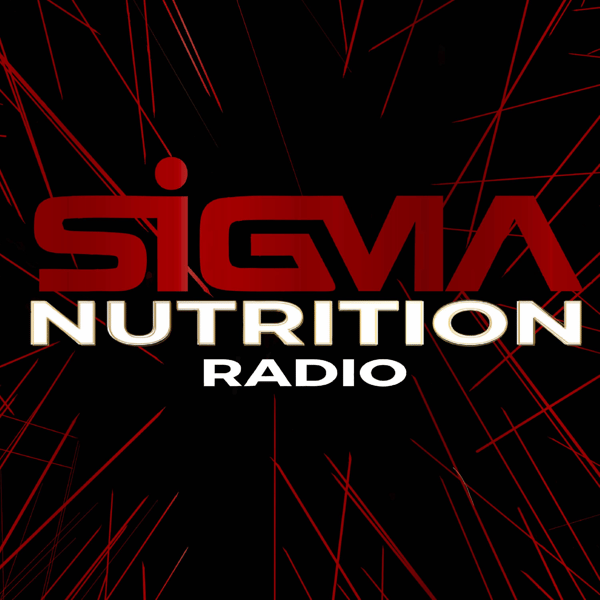#315: Samia Mora, MD – Lipids, Lipoproteins & Atherosclerosis
Sigma Nutrition Radio
Danny Lennon
4.8 • 626 Ratings
🗓️ 15 January 2020
⏱️ 57 minutes
🧾️ Download transcript
Summary
Dr. Samia Mora is an Associate Professor of Medicine at Harvard Medical School, Boston, Massachusetts. She is a cardiovascular medicine specialist at the Brigham and Women’s Hospital, where she is the Director of the Center for Lipid Metabolomics. Dr. Mora’s research focuses on risk factors and prevention of cardiovascular disease.
Dr. Mora received her undergraduate degree from Harvard University, and her medical degree from Harvard Medical School. She completed an internal medicine residency at Massachusetts General Hospital and a cardiovascular disease fellowship at The Johns Hopkins Hospital, where she also obtained a Masters in Health Science (Epidemiology) from the Johns Hopkins Bloomberg School of Public Health.
This episode is sponsored by Legion Athletics. Get 20% off your order using the code SIGMA. All US order come with free shipping and all international orders have free shipping on orders over $99. All orders have a money-back guarentee. Check out the products at buylegion.com
Sigma Statement: https://sigmanutrition.com/lipids
Transcript
Click on a timestamp to play from that location
| 0:00.0 | Heart disease is known as the leading cause of death globally. |
| 0:05.0 | And despite significant progress over the last couple of decades in the Western world, |
| 0:12.0 | particularly in higher income countries, it still remains the biggest killer in countries like the US and the UK as well. |
| 0:25.2 | So it's obvious that when it comes to health science and when it comes to predicting risk and deciding on |
| 0:28.9 | what can we do to prevent deaths over time, |
| 0:32.8 | that looking at heart disease and cardiovascular disease |
| 0:36.6 | is an important component. And when it comes to cardiovascular disease and cardiovascular disease is an important component. |
| 0:38.8 | And when it comes to cardiovascular disease and particularly coronary heart disease, |
| 0:42.8 | one of the precursors that's most often discussed is atherosclerosis. |
| 0:47.6 | And atherosclerosis being what we typically refer to when someone says that there's a buildup |
| 0:53.0 | of plaque in the arteries. So there is these |
| 0:56.4 | deposits of lipids and cholesterol and various substances that form this plaque in the artery. What is |
| 1:04.2 | required for atherosclerosis to develop is that the particles that carry those various lipids and cholesterol and so on, |
| 1:12.6 | those particles penetrate the arterial wall. And those particles are called lipoproteins. |
| 1:19.6 | And so before we can have conversations around how diet can impact cardiovascular disease risk, |
| 1:26.6 | or the relevance of certain dietary patterns that may elevate or decrease things like cholesterol or lipoproteins, |
| 1:35.3 | we first need to look at what is the actual connection between lipids, lipoproteins, aro-sclerosis, and cardiovascular disease. |
| 1:48.0 | And understanding that, then we can start to build on some of the conversations that look at dietary effects, both on those lipids and lipoproteins, but also on end cardiovascular outcomes. |
| 1:56.0 | And in fact, for those of you who may have seen this posted already, this week has marked the launch of the first ever Sigma statement. |
| 2:04.6 | So these Sigma statements are something that we're going to be putting out as a new free resource that's on the Sigma Nutrition website. |
| 2:12.6 | They are typically going to be written pieces as well as having some graphics and maybe some links to some other type of media, but typically a written piece that is aimed to be a clear walk through an explanation of the current evidence on a specific topic related to nutritional and health science. |
| 2:31.7 | And the aim is to have you coming away with a clearer and more nuanced |
... |
Please login to see the full transcript.
Disclaimer: The podcast and artwork embedded on this page are from Danny Lennon, and are the property of its owner and not affiliated with or endorsed by Tapesearch.
Generated transcripts are the property of Danny Lennon and are distributed freely under the Fair Use doctrine. Transcripts generated by Tapesearch are not guaranteed to be accurate.
Copyright © Tapesearch 2025.

